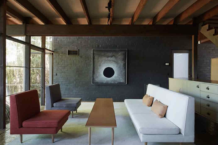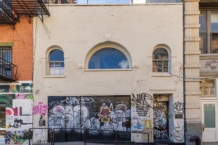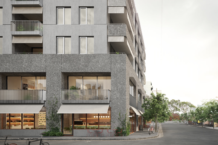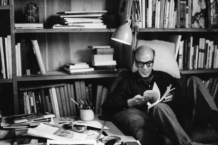Dialogue | Liam Young.
Architecture, People - by Tiffany Jade
-
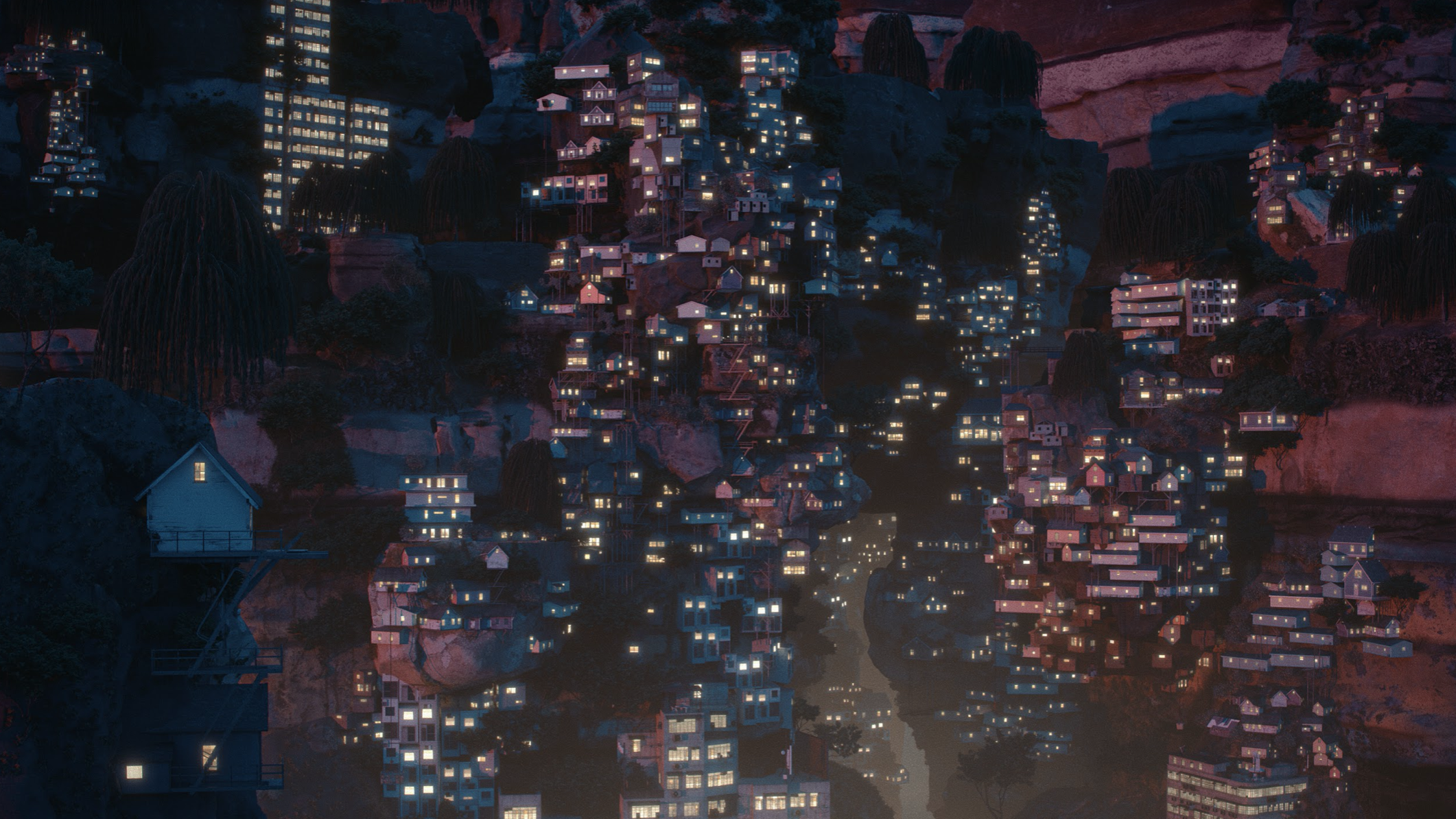
Digital still from 'Planet City' by Liam Young
26th May, 2021
Liam Young is a speculative architect whose deeply thoughtful and highly relevant work employs multi-disciplinary critical thinking and creative conceptual analysis around the emerging technologies of today that are shaping the world of tomorrow. Through film, Liam conjures fantastical worlds and narratives informed by myriad perspectives and presented through the particularly poignant intrigue found in possibility and presentiment. We spoke with Liam about how he came to do what he does and what that might mean for the development of our future cities.
Open Journal (OJ) | What led you to become a ‘speculative architect?’
Liam Young (LY) | As a speculative architect, I don’t design buildings as endpoints or outputs, but I would still argue that what I do is architectural, or at least it’s architecture in some form. Instead of creating buildings themselves, I tell stories about the global, urban and architectural implications of emerging technologies. The dominant forces of the past that shaped our cities, buildings, and public spaces are now being displaced by technologies, systems, networks, and stacks. Thus, the architect needs to change their model of practice in order to remain relevant. The architect now needs to intervene in these systems beyond shaping physical buildings. And that is really about telling stories about how they operate. Speculative architects mostly create narratives about how new technologies and networks influence space, culture, and community. They try to imagine where new forms of agency exist within the cities changed by these new processes.
A lot of these technologies that we talk about when we’re thinking about smart cities or our future cities are what I define as “before-culture technologies.” Since ideology rarely evolves at the same pace as technology, speculative practices and processes are really a form of prototyping cultural responses to and consequences of technologies that aren’t quite here yet.
That’s why speculation and futures are really important. It’s a way of engaging an audience and empowering them to make decisions about the futures that they want to live in because inevitably, the future is a verb, not a noun. The future isn’t something that just washes over us like water. It’s something that we actively shape and define.

New City | The City In The Sea
OJ | You’ve acknowledged that the field of Speculative Architecture provides a “fictional counterbalance to the narrative that exists around emerging technologies” presenting a “solutionist view.” How does your film ‘Planet City‘ explore this?
LY | It is an urban imaginary that explores the productive potential of extreme densification, where 10 billion people surrender the rest of the planet to a global wilderness. It is drawn from the work of seminal biologist Edward O Wilson who has proposed “Half Earth”, what he calls an “achievable plan” to stave off mass extinction by devoting half the surface of the earth completely to nature. The byproduct of this global park, however is the necessity to redesign the realities of the present day planetary city we all occupy. Planet City begins with this question and prototypes the massive consolidation of our urban development that will be required to achieve this. In its most provocative form, if we were to reorganise our world at the scale of our densest cities then Planet City could actually occupy as little as 0.02 percent of earth (roughly the size of an average US state). It is a microcosm of the planet that will afford us the space to re-wild and return almost the entirety of the world to a global-scaled wilderness. Although this is a fiction of a form of extreme urbanization it is actually arguing for radical deurbanization in that it proposes to leave 99.98% of the planet for rewilding and the return of stolen lands.
To achieve this, Planet City is built entirely from sustainable technologies that are already here, but that just lack the cultural investment or political will to implement them at scale. For example existing systems of large scale solar fields, a mix of renewable energy systems feeding pumped hydro energy storage systems, microbiological closed loop waste recycled processes developed for Mars habitation and so on. To a large extent all of the systems required to mitigate the effects of climate change or even reverse it have existed for years.
Although wildly speculative, the project is a grounded and possible proposal developed from real calculations, cutting edge research, and the support of a distributed council of acclaimed environmental scientists, technologists, economists and authors from all over the world. We just look at what possible urban forms might emerge if we fully embraced these technologies and implemented them at their most extreme scale. This is a necessary form of prototyping and speculation that isn’t an attempt to impose a singular vision but rather the development of counter narratives that could be discussed and debated to scaffold larger scale cultural engagement in their possible implications.
The front line of the climate change fight is no longer technological, it is now an economic, political and culture battle.

Lunar New Year | Still from Planet City

Vertical Orchard | Still from Planet City
OJ | How do you hope your films will be received?
LY | Planet City is a not a plan for direct implementation, but rather serves as a grounded provocation that prototypes the necessary systemic and lifestyle changes that may be required in order for our world to continue to support human life. It affords us this critical distance from which to reevaluate ourselves and helps us to see that normal is the actual problem. What comes into focus are not the extremes of this fictional city but the catastrophic models of everyday urbanism. The live-action dystopian film we all occupy in the present moment is just as fantastic, implausible, and incalculable as any science fiction imagining. In a world that is post truth, post logic, and post geography Planet City is both already here and entirely imaginary. Projects like this one hope to contribute to a necessary collective conversation about the futures we want to all be a part of us. It is a call to arms, a hope that we all will keep making stories and building worlds that become vessels for critical ideas—Trojan Horses hidden within the mediums of popular culture.
Planet City presents the idea that we need to radically embrace the uncomfortable place we now occupy in a world where we can no longer be at its centre. At present, we chart territory for the extraction of wealth and the fulfillment of our own desires. But Planet City imagines that the rest of the globe outside of its walls are defined specifically in order for us to leave it empty. Suggestive of a national park boundary we might draw this line on the earth not to own, develop, or occupy, but to keep us out and scaffold its recovery. In Planet City technology is deployed to intensify human activity and make more room for an intentional landscape, a carbon sink wilderness and a voluntary exclusion zone . The beginnings of Planet City is the necessary end of human centered design and the foregrounding of action for non human species and the development of positions such as ‘wetlands centered design’, ‘atmosphere centered design’ or ‘whooping crane centered design’. In this way the project is based on the assumption that climate change is no longer a technological problem, but rather an ideological one, rooted in culture and politics. Any plan to address environmental disaster my engage us in this cultural shift not feed us just one more naïve, simplified technological solution.

Film still from ‘Renderlands’
OJ | Your films often feature technology that assumes an emotive facet, mimicking sympathy empathy, human connection and engagement. Do you see this as a future driver of technology? Do you feel that this humanist veil will ultimately lead to people seeking the real thing as opposed to its technological replacement?
LY | It’s impossible to separate technology from culture. It’s also now impossible to separate the digital from the physical. Everything about us is conditioned by both our physical and digital selves. There is no ‘real’ anymore that exists beyond the digital. All our film and worldbuilding projects are about prototyping the cultural and emotional consequences of these systems beyond any notion of the ‘solutions’ industry thinks they may be generating. These technologies we speak of today – drones, driverless cars, AI governance etc. – are not solutions to anything, things are never that easy, technology just exaggerates the contradictions and biases in ourselves. We build technology in our own images, it creates a world that is equal parts fear and wonder.
Our film Seoul City Machine is a love letter from an urban operating system to the citizens it affectionately manages. The script is evolved from a conversation we had with a chatbot we trained on urban operating protocols. Perhaps what we should be doing is looking at how, at these early stages, we can be prototyping new modalities of communication with technology. What are the most appropriate means through which we can have an interaction with an autonomous shipping crane loading containers into the hull of a ship at a Chinese mega port? How do we ask a question of a warehouse filled with a million objects or talk to a city managing itself based on aggregated data sets from an infinite network of sensors, cameras and media feeds?

Film still from ‘Seoul City Machine’
OJ | If our near-future is marketing through the filter of ‘efficiency’ what is a possible (more holistic) alternative?
LY | Generally images of the future perpetuate the false binary opposition of a technological future versus one that is defined by a retreat to nature and simplicity. Most science fiction visions reinforce the assumptions of industrialization—that density is dirty and congested, always a tragic encounter removed from our natural life in the idyllic countryside. If it is not the colonialist dystopian skylines of cyberpunk, then we are either retreating into a western-centric pastoral nostalgia or gleaming techno-fetishism. Planet City eschews these outmoded science fiction tropes. Planet City is not a project of satire but instead we must understand it as simultaneously utopian and dystopian at the same time.
Cyber Punk imagined the messy subcultures of the virtual, Solar Punk projects the aspiring communities of Ecotech. The aesthetic movements of science fiction have always been productive in engaging a wider public in visions of what the future could be. In this moment I think we need to define a new aesthetic language for the future. Planet City is an artefact of what we could call Planetary Punk, Infra Punk or Geo Punk, a world that embraces the ideological and cultural consequences of planetary scaled computation. It also foreground possible futures that are emerging from no western contexts and looks to places and communities that are not typically part of the white saviour hero’s Hollywood narrative.

Indoor Farm | Film still from Planet City
OJ | What, in your opinion, is the responsibility of Architects in the development of future built environments?
LY | Sometimes moments, places, or cities are best understood by examining the fictions we construct about them. We are all literate in stories—and they are accessible and public in a way that architectural drawings, diagrams or other disciplinary specific mediums are not. Fiction is an extraordinary shared language; it is how cultures communicate and disseminate ideas. Narratives of imagined cities help us to visualise other possible futures that sit outside of the one that all too often feels inescapable. The urban imaginary has always been a site in which to prototype new scenarios and emerging cultures. In their speculative streets we play out multiple, unexpected, unintended futures and their associated social and political ideologies. These fictional cities are products of culture and in turn can produce culture.
It is unfortunately nation states, governments and large corporations that have really failed us when it comes to climate change. Traditional forms of architecture and the architect are both enabled by and complicit with these entities. We perpetuate the problems they create and the systems of power and finance through which they operate. What we are seeing is how completely ineffective these forms have been in addressing problems of this scale and time frame. Without change at this level no architectural invention or proposal has any hope. If we understand that climate change is now a cultural problem not a technological one then the issue is that too often architects fail to operate as cultural or political agents and instead fetishize or attempt to impose simplified technological solutions to what are in fact extraordinarily layered and complex social problems. If the battleground of climate change is in cultural and ideological discourse then we need to make projects that have resonance in that space, not repeat outmoded master planning projects with the hubris and megalomaniacal tendencies of previous generations. The type of imagination needed as designers and architects is based around rethinking our relationship to these structural forces and developing new models of practice and projects that can engage audiences in these underlying problems.
With many thanks to Liam Young.
Liam has recently published a book titled ‘Planet City’ with Uro Publication which can be purchased here.
Interview compiled for Open Journal by | Tiffany Jade



